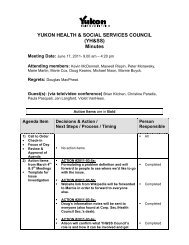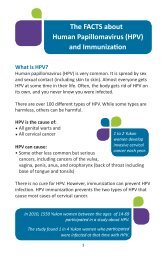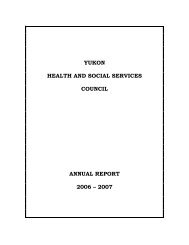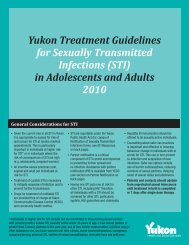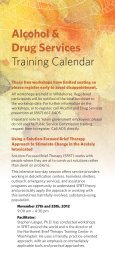Principles of Immunology - Health and Social Services
Principles of Immunology - Health and Social Services
Principles of Immunology - Health and Social Services
You also want an ePaper? Increase the reach of your titles
YUMPU automatically turns print PDFs into web optimized ePapers that Google loves.
Community Nursing<br />
Yukon Immunization Program<br />
Section 14 - <strong>Principles</strong> <strong>of</strong> <strong>Immunology</strong><br />
2011 March<br />
Page 4<br />
1.5 ACTIVE IMMUNITY<br />
The body’s immune response can be understood by following the course <strong>of</strong> an infection<br />
as described below:<br />
<br />
<br />
<br />
<br />
<br />
Most pathogens are kept outside <strong>of</strong> the body by protective mechanisms such as<br />
tears or skin that act as barriers.<br />
When there is an injury to tissue, bacteria or viruses can enter the tissue <strong>and</strong><br />
cause infection.<br />
Innate cells (macrophages, dendritic cells) respond by recognizing viruses <strong>and</strong><br />
bacteria as foreign <strong>and</strong> specialize in engulfing these invaders (phagocytosis).<br />
These innate cells <strong>and</strong> protective barriers are part <strong>of</strong> innate immunity because<br />
they “innately” respond to foreign substances.<br />
In addition, dendritic cells display the antigens on their cell surface <strong>and</strong> travel to<br />
the lymph nodes.<br />
In the lymph nodes the dendritic cells present the antigen to the T cells. The T<br />
cells then activate the B cells to make antibodies. The T cells <strong>and</strong> B cells are part<br />
<strong>of</strong> the adaptive immunity because they are “adapting” to the foreign substance<br />
<strong>and</strong> creating memory against future infections.<br />
1.6 INNATE IMMUNITY - “FIRST” IMMUNE DEFENCE<br />
Innate immunity consists <strong>of</strong> protective mechanisms we are born with, <strong>and</strong> are the first<br />
line <strong>of</strong> defence against anything recognized as non-self.<br />
The produced immune response is not specific to the antigen <strong>and</strong> no memory <strong>of</strong> the<br />
antigen persists.<br />
However, innate immunity is the crucial first step in most adaptive immune responses.<br />
The following are the protective mechanisms <strong>of</strong> innate immunity (see Table 1):<br />
Physical <strong>and</strong> Chemical Mechanisms<br />
Phagocytosis<br />
Molecular Response<br />
Inflammatory Response



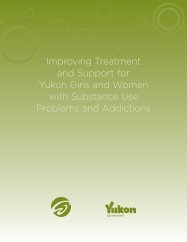
![Women and Alcohol: A women's health resource [2326.26 KB ]](https://img.yumpu.com/22340649/1/190x245/women-and-alcohol-a-womens-health-resource-232626-kb-.jpg?quality=85)


